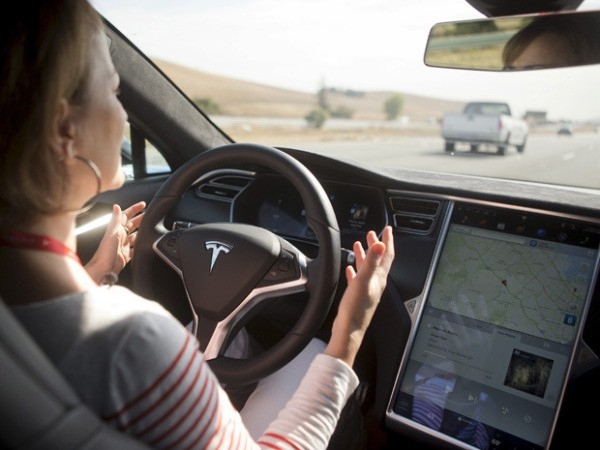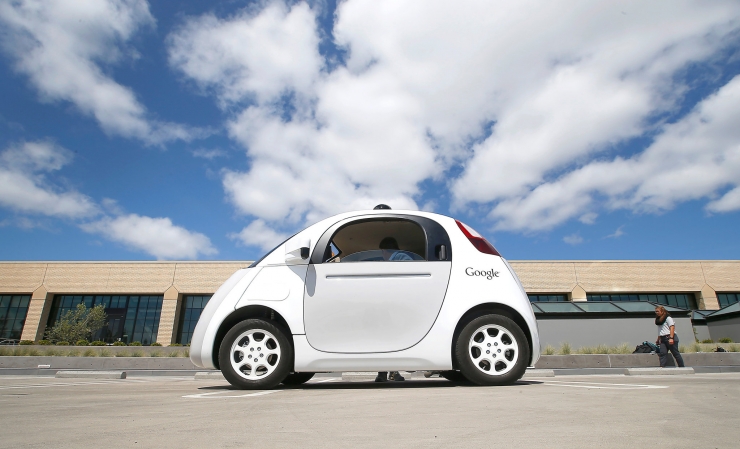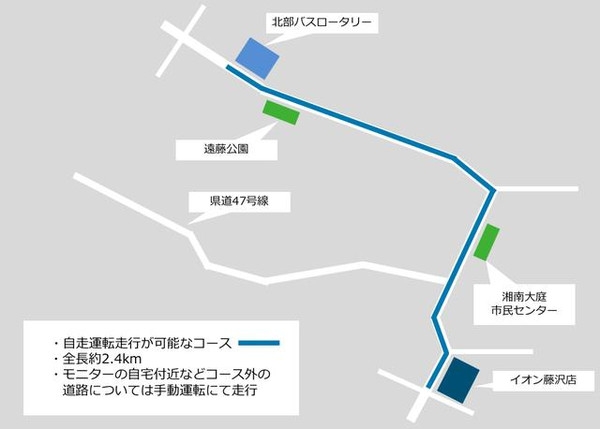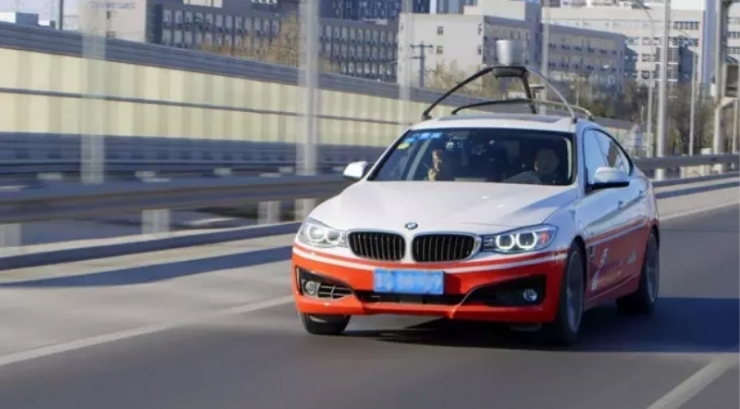In mid-February this year, Google’s driverless car had a car accident and had a “close contact†with a bus. After the traffic department decided, Google’s driverless car would take some responsibility for the accident. Coincidentally, not long ago, when a Tesla user ran into a truck with Tesla's autopilot (unmanned intervention) and was killed, Tesla immediately "kept the pot" after knowing it. , saying that the owner should not leave the operation post, what they do is not driverless cars.

Regardless of whether it is autopilot or driverless, from the current development status, no matter how smart the software is, how powerful the hardware is, all the research and development companies or units of driverless vehicles are faced with a problem - the supervision of the legal framework.
What are the attitudes of countries in driverless/autopilot driving?
United StatesDue to the special nature of the United States constitution, each state has different attitudes towards driverless technology. As early as 2012, Google applied for a road test for unmanned vehicles on Nevada Week and obtained approval. This is the first time that the United States has legalized the “unmanned vehicleâ€, although the state recognizes unmanned vehicles. Legal, but also requires the unmanned vehicle must be equipped with a steering wheel and brakes, and must be in the driving position, just in case. This point made Google unacceptable. Google believes that driverless cars must be 100% automatic when they want to be safe, rather than semi-autonomous driving. They think that intervention may conflict with autopilot. Therefore, Google’s unmanned vehicle does not have a brake and a steering wheel.

Google Unmanned Vehicle
The purpose of 100% unmanned seems to be fulfilled, and another question is coming: If there is a car accident, who is responsible? In the past, when an accident occurred during the driving of a driverless car, the responsibility would be attributed to the owner of the car. However, this is obviously unreasonable. In March of this year, Google announced that the US National Highway Traffic Safety Administration’s resolution document to Google stated that Google’s unmanned vehicles comply with federal laws and that the driver of driverless cars is a self-driving system rather than the owner himself. The promulgation of this regulation has further perfected the rules for the development of unmanned vehicles and promoted the protection of technical safety of unmanned vehicles by major companies.
Although these laws and regulations allow legalization of unmanned vehicles, so far, there is no systematic unmanned vehicle management provision in the United States. According to the "Los Angeles Times," US Transportation Secretary Anthony Foxx stated at an industry conference in Los Angeles on Tuesday that the US Department of Transportation will issue new guidelines for driverless cars this summer. He also said that it will launch pre-market approval procedures for unmanned or semi-autonomous vehicles such as Google, BMW and General Motors. For example, it will clearly define the responsibilities of companies, governments, and consumers. A federal advisory committee will also be set up to help Make the "?Driving and artificial intelligence more universal" plan, and cooperate with the state governments to carry out specific deployments.
The formulation of this new guideline will allow the U.S. unmanned vehicle and self-driving cars to have a more systematic plan for the entire industry, and will promote the development of U.S. unmanned vehicles.
EuropeGermany is one of the earliest countries in the world to introduce the concept of driverless cars. Bosch, Mercedes-Benz and other famous companies have conducted field tests of unmanned vehicles in multiple environments such as highways, urban transportation and rural roads. These tests were also approved and supported by the government. However, the "Tesla accident" brought a small ripple to the development of driverless cars in Germany.
After Tesla had an “automated driving accidentâ€, the German Ministry of Transport wanted the House to submit a proposal to install black boxes in all self-driving cars, record the entire journey of vehicles, and facilitate the identification of responsibilities after the accident. In addition, the government did not interfere too much with the development of unmanned vehicles. In general, driverless development in Germany is relatively smooth.

Unmanned vehicle "black box"
In order to realize the industrial revival, France launched the "New Industry France" strategy as early as in 2013. Among the 34 industrial sectors that have been fostered and developed in the strategy, there is a driverless car. In 2014, France invested 100 million Euros. In the next three years, it will conduct field tests for driverless cars. The French government stated that it will achieve the interconnection of thousands of kilometers of roads nationwide by the end of 2016 and promote the revision of road traffic laws and regulations. Meet the requirements of unmanned cars on the road, and open roads to global automakers for unmanned vehicle testing.
According to the British BBC forecast, there will be 100 fully automated driverless cars in use in 2017. Currently, research and development of driverless cars in the UK is relatively smooth, and the United Kingdom has already put the agenda on amending relevant road traffic regulations.
JapanAs one of the world’s largest auto-producing countries, Japan’s attitude towards driverless cars is also more supportive. At the end of last year, the Japanese government stated that it would relax the relevant laws and regulations for driverless cars and allow auto-driving cars to be tested on roads in 2017. However, its purpose is to stimulate innovation and creativity in the country to welcome the 2020 Tokyo Olympic Games.

On May 20th this year, the headquarters of Japan's IT synthesis strategy developed a roadmap for the popularization of autopilots. Self-driving cars (which still have drivers sitting inside) and remotely monitored driverless cars will be allowed to enter the road in 2020. During the Tokyo Olympics and Paralympics, Japanese private companies will provide driverless taxi services for tourists around the world in designated areas. And this plan will start a large-scale trial next year. In addition, the Japanese government is currently working on the revision of the "Road Traffic Law" and the "Road Transport Vehicles Law" in order to allow unmanned vehicles to hit the road in 2020.
ChinaIn the new energy vehicles, the Chinese government has already given a lot of subsidies to support it, which also promotes the car's Internet-based, intelligent development. However, in the days when driverless cars have just started, relevant laws and regulations concerning driverless cars have not yet been introduced.
Just last month, the first closed test area of ​​the “National Intelligent Network Alliance Automotive (Shanghai) Pilot Demonstration Zone†approved by the Ministry of Industry and Information Technology was formally opened. This means that China's intelligent networking and driverless cars formally enter the stage of practical operation from the national strategy. At the opening ceremony, Fu Yuwu, Chairman of the China Association of Automotive Engineers, said that the domestic driverless technology roadmap already exists and will be released within two months. This will also be the first announcement in China's unmanned area. Technical standards.

Baidu unmanned vehicles
China’s emphasis on high-tech is obvious to all. During this year’s World Internet Conference, Xida also personally inspected the Baidu unmanned vehicle project and detailedly learned the level of independent research and development of unmanned vehicles, mass production problems, and so on. The car innovation affirmed. During the two sessions, Baidu CEO Li Yanhong also began to advise the Chinese government to attach importance to unmanned vehicles from the national level, do top-level design and scientific planning, and increase financial support to encourage cooperation between auto companies and Internet companies. In addition, Li Yanhong also proposed that the amendment be implemented as soon as possible. Improve driverless laws and regulations and provide institutional protection for the development, testing, and commercialization of driverless cars.
I believe that in the near future, we will also have relevant support policies.
to sum upIn general, the Asia-Pacific region is more conservative than Europe and the United States in its policy on driverless cars. On the one hand, Europe and the United States are relatively more developed than the Asia-Pacific region in terms of sophisticated core technologies. On the other hand, the environment and economy in different regions The situation also leads to different levels of development.
However, faced with the future trend of unmanned driving, countries generally hold a positive attitude and support it to some extent. As science and technology giants promote the development of the unmanned vehicle industry, the exploration of unmanned vehicles will be faster in the future, and laws and regulations will be improved sooner or later.
Draw-out Type Low Voltage Switchgear Systems MNS
Draw-Out Type Low Voltage Switchgear Systems Mns,Draw-Out Type Low Voltage Switchgear Systems,Low Voltage Switchgear Systems,Lv Switchgear Systems
TRANCHART Electrical and Machinery Co.,LTD , https://www.tranchart-electrical.com
![<?echo $_SERVER['SERVER_NAME'];?>](/template/twentyseventeen/skin/images/header.jpg)